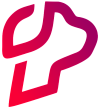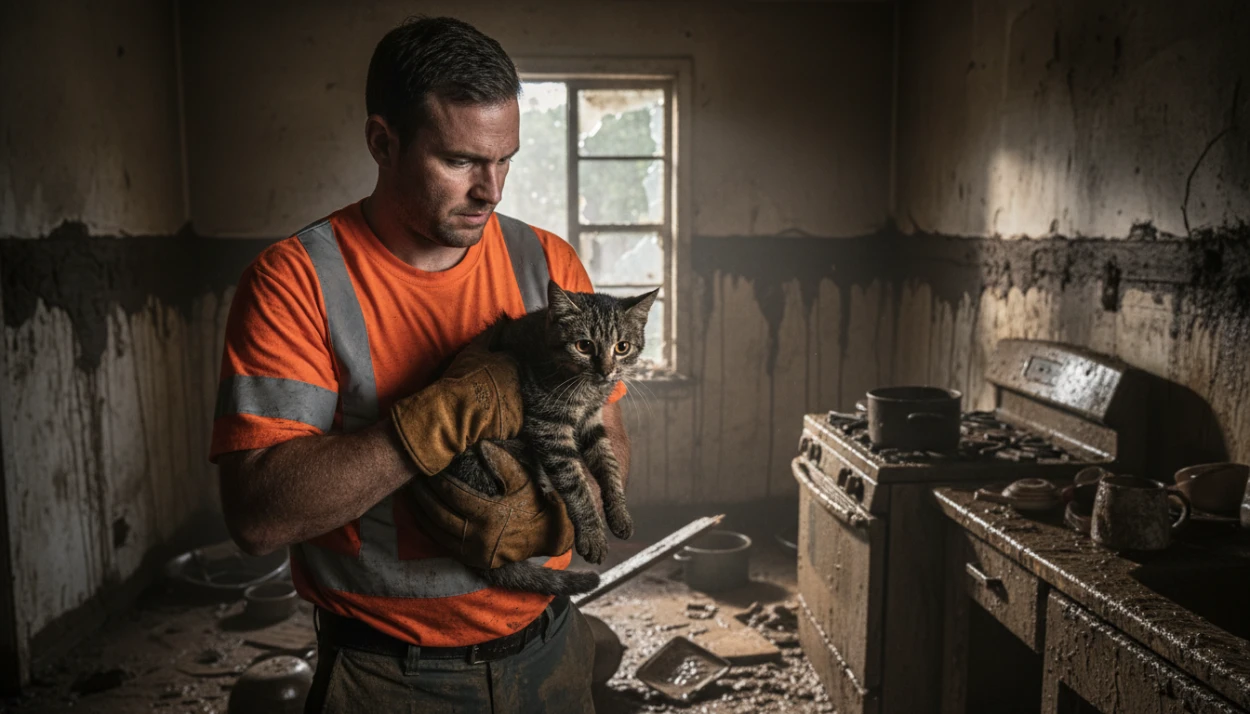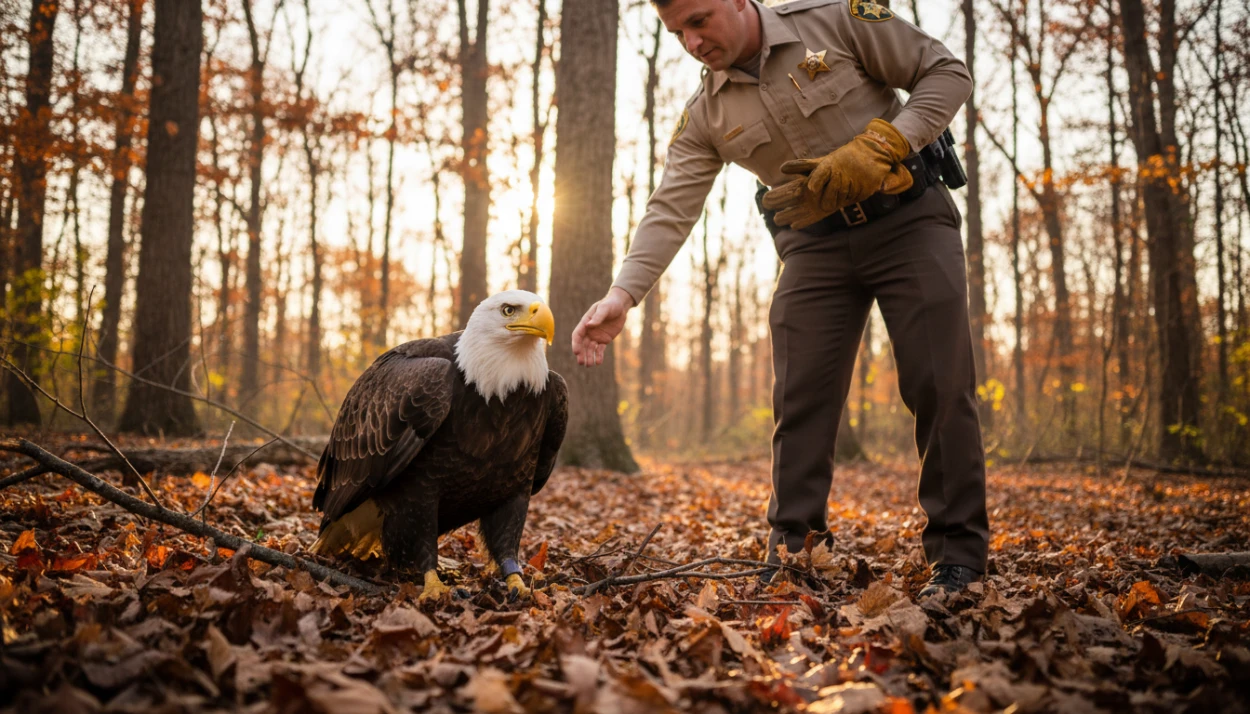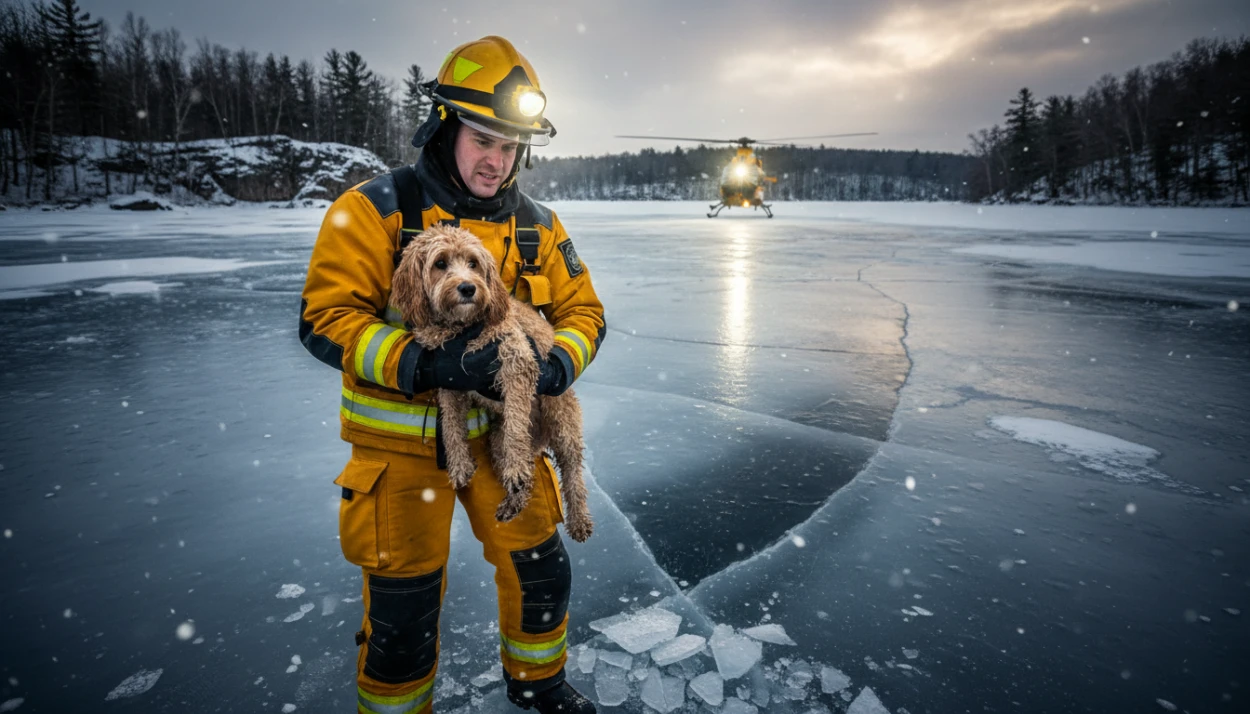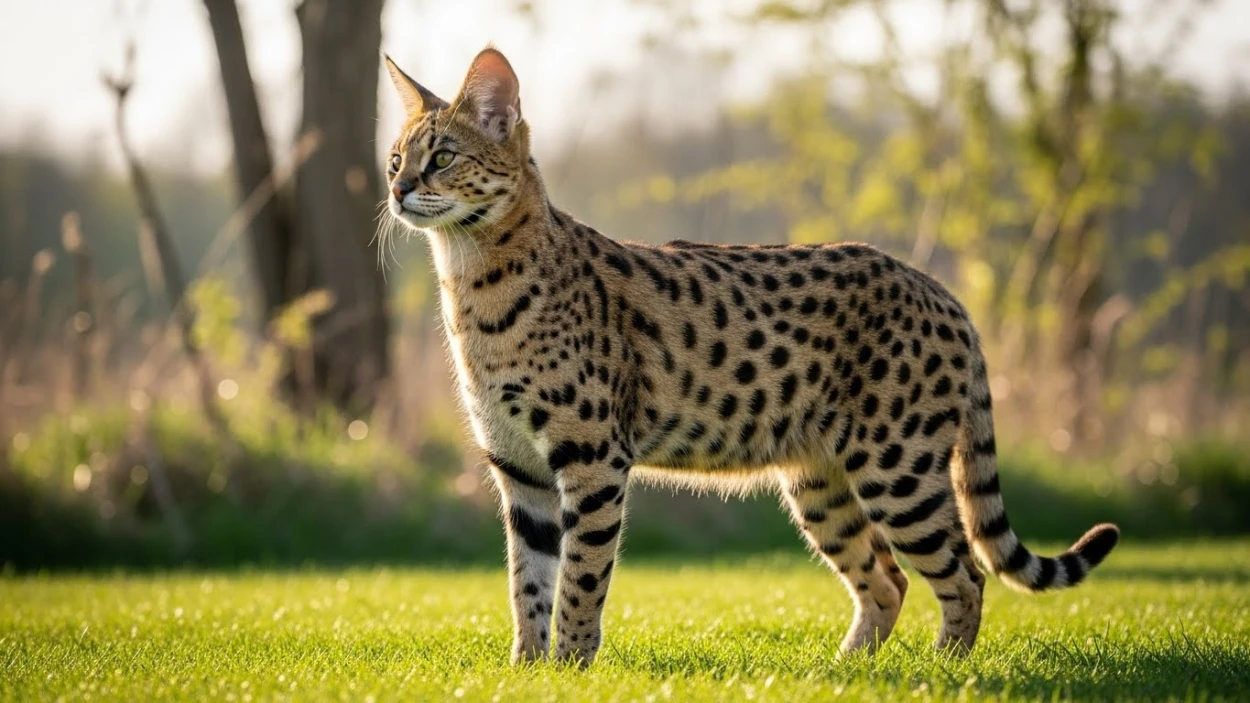Nature's diversity never ceases to amaze us, and among its many wonders are the charming round birds. These avian creatures captivate our hearts with their rotund shapes, distinctive plumage, and intriguing behaviours.
In this article, we will delve into the fascinating world's roundest birds,exploring their characteristics, adaptations, ecological roles, cultural significance, and more. So, let's take flight on this avian adventure!
Roundest bird or just perception?
Is the concept of the "roundest bird" purely subjective, driven by our perception, or is there a scientific way to determine it? We explore the criteria used to measure roundness in birds and whether it's more than just an intriguing visual trait.
What are Round Birds?
Round birds, as the name suggests, are a group of avian species known for their plump, round bodies. While they come in various shapes and sizes, their overall roundness sets them apart in the avian world.
These birds have garnered attention from bird enthusiasts, artists, and scientists alike due to their endearing appearance.
Characteristics of Round Birds
Round birds vary in size, from chubby robins to rounder puffins, characterized by their charming spherical or oval bodies, which aid in conserving heat in colder climates. Their plumage boasts diverse patterns and colours, serving insulation and camouflage purposes in different habitats.
These adaptable birds can be found in various ecosystems, making it vital to comprehend their habitat preferences for effective conservation efforts.
20 Roundest bird
1. Bearded Reedling (Panurus biarmicus)
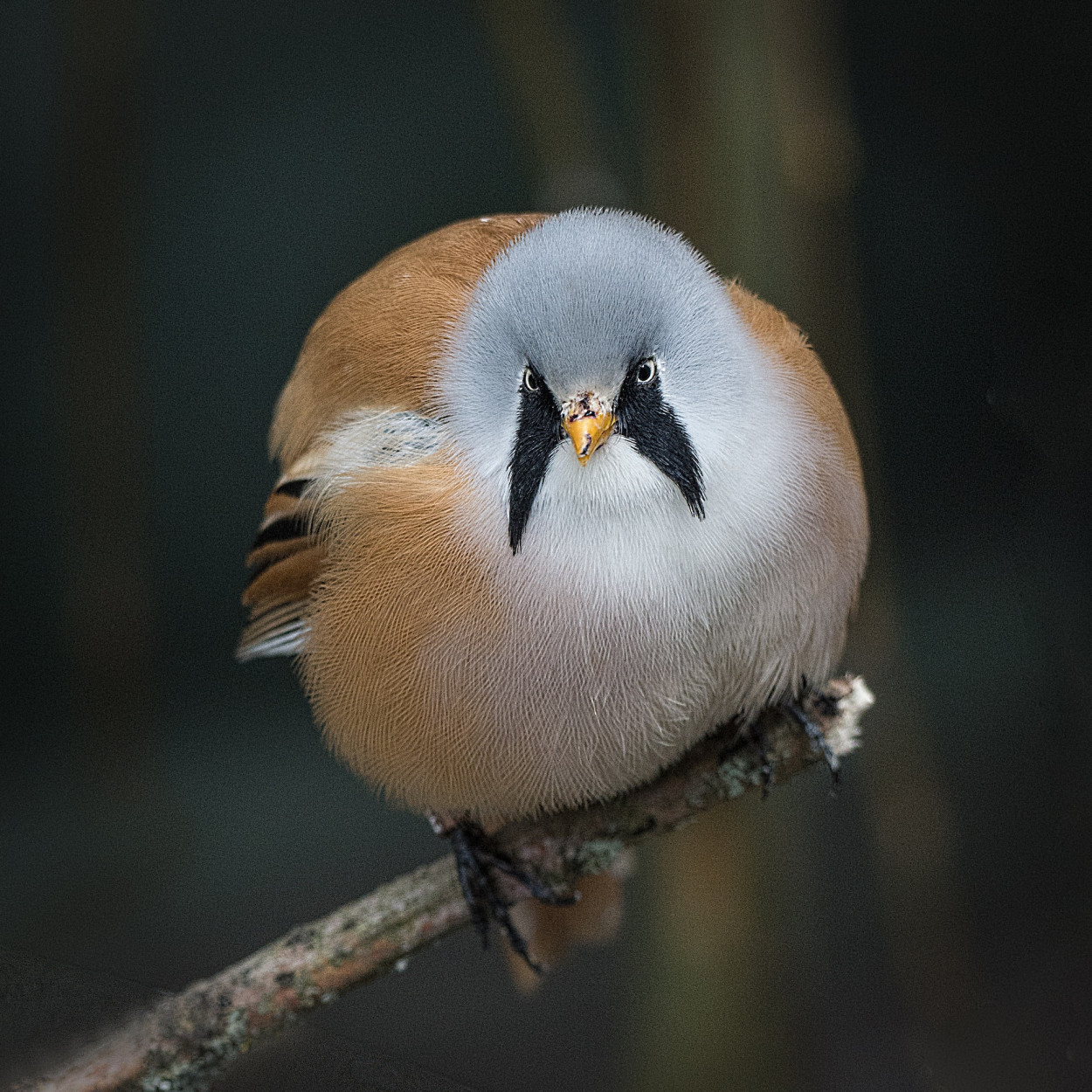
The Bearded Reedling, also known as the Bearded Tit, is a charming, bearded reedling round bird found in wetland habitats across Europe and parts of Asia. The bearded reedling is one of the cutest round birds in the world.
Male Bearded Reedlings feature striking grey heads with black moustache-like streaks, vibrant yellow bills, and orange-brown upper and underparts, while females have a similar color palette but lack the moustache.
These round birds are approximately 6.5 inches in size and are known for their distinctive "tue tue" and 'chew chew' calls in their marshy homes.
2. Eurasian Bullfinch (Pyrrhula pyrrhula)
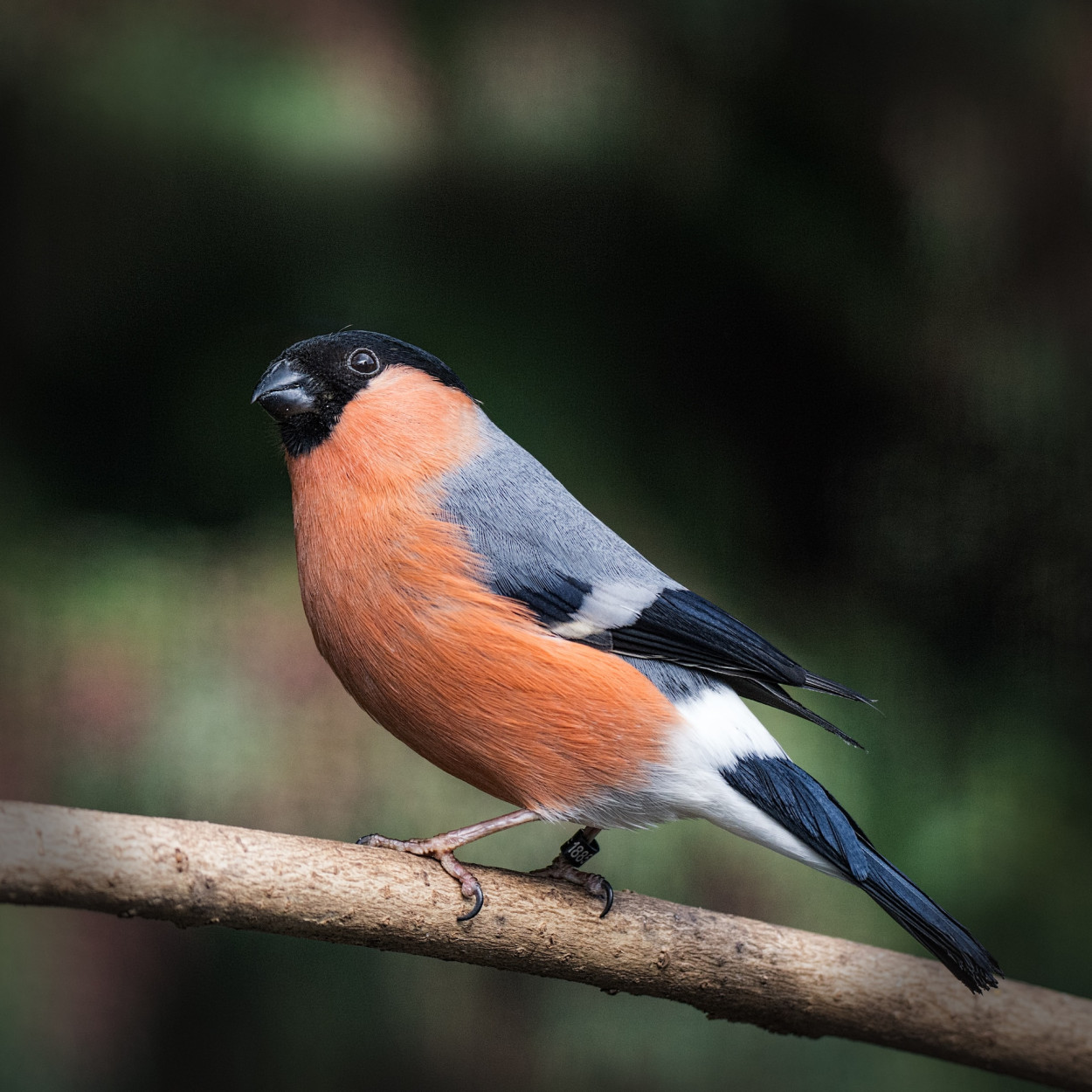
The Eurasian Bullfinch, a charming and another round bird, is a small migratory songbird found in Europe and Asia depending on the season. Male Eurasian Bullfinches are easily identifiable by their sleek black heads, grey backs, and vibrant orange-red underparts, while females and juveniles sport a more subdued brownish-grey appearance with a black cap.
These adaptable birds can inhabit various environments, including woodlands, parks, gardens, and grasslands, with a preference for open farmland. They primarily feed on seeds, flower buds, and kale, and can live up to 5 years.
3. Vulturine Guinea Fowl (Acryllium vulturinum)
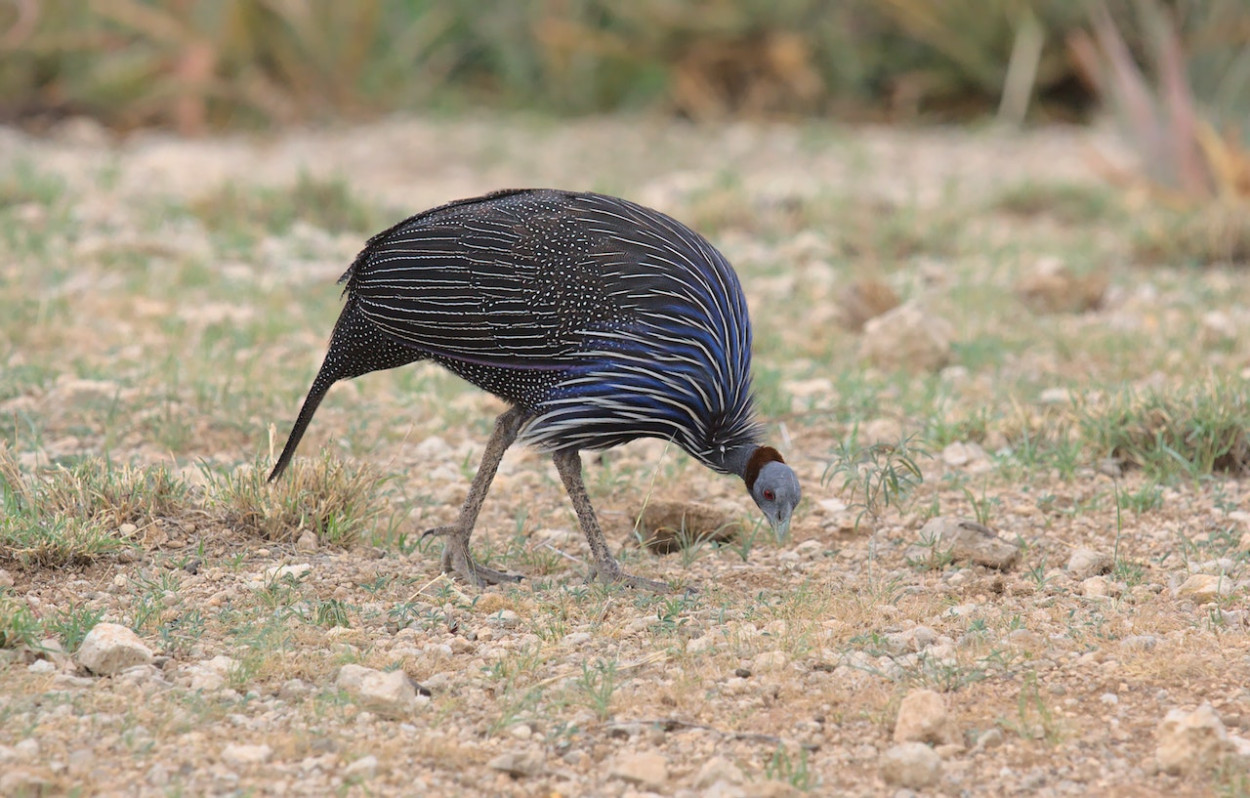
Vulturine Guinea Fowls, native to sub-Saharan Africa, Kenya, and Ethiopia, are known for their unique appearance and behaviour. They thrive in savannas, grasslands, and scrub lands, often forming sizeable social groups of approximately 25 individuals.
Identifying them is a breeze: these round birds boast long, slender necks and bare heads with bluish skin. Their wings, under tails, and lower backs sport black colouring peppered with white spots, while their breasts and bellies shine in bright blue. Short, rounded wings and long, pointed tails are also part of their distinctive look.
These birds are built for running, with strong legs adapted for terrestrial movement rather than flying.
4. Eurasian Blue Tit (Cyanistes caeruleus)

Eurasian Blue Tits, found in Europe, Asia, and Africa, are non-migratory birds, measuring around 4.7 inches in size, similar to chickadees.
Recognizable by their blue crown, white face with a black mask, black throat, and blue-gray back and wings, these round birds make their homes in evergreens, ivy, and nest boxes. During breeding, they dine on spiders and small insects, while in non-breeding months, seeds become their primary food source.
5. Barred Buttonquail (Turnix suscitator)
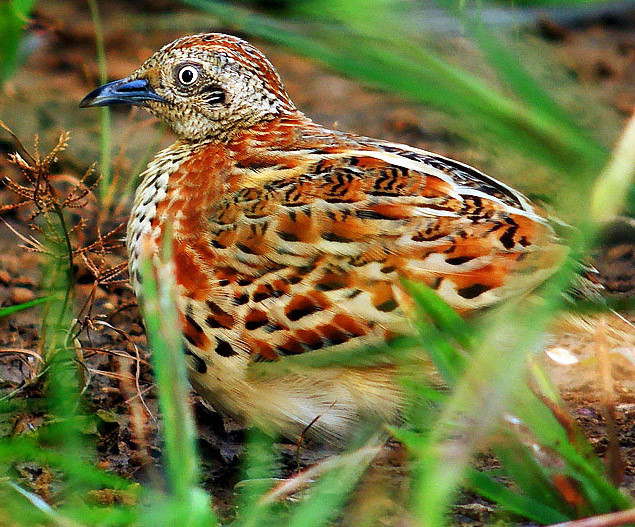
The Barred Buttonquail, also called the Common Bustard-Quail (Turnix suscitator), belongs to the buttonquail family and closely resembles true quails. They inhabit tropical Asia, spanning from India to southern China, Indonesia, and the Philippines.
These small round birds have Rufus-brown upper parts and rusty-buff underparts with distinctive black barring on the chin, throat, and breast. Females are larger and more colourful, sporting black throats and breast centres. Their blue-grey bill and legs, yellowish-white eyes, and pale buff wing patches during flight are distinctive features.
Unlike true quails, they lack a hind toe and are often found in pairs in scrub and grassland areas, producing calls resembling a motorcycle-like "drr-r-r-r-r-r" and a loud "hoon-hoon-hoon."
6. Long-tailed Tit (Aegithalos caudatus)
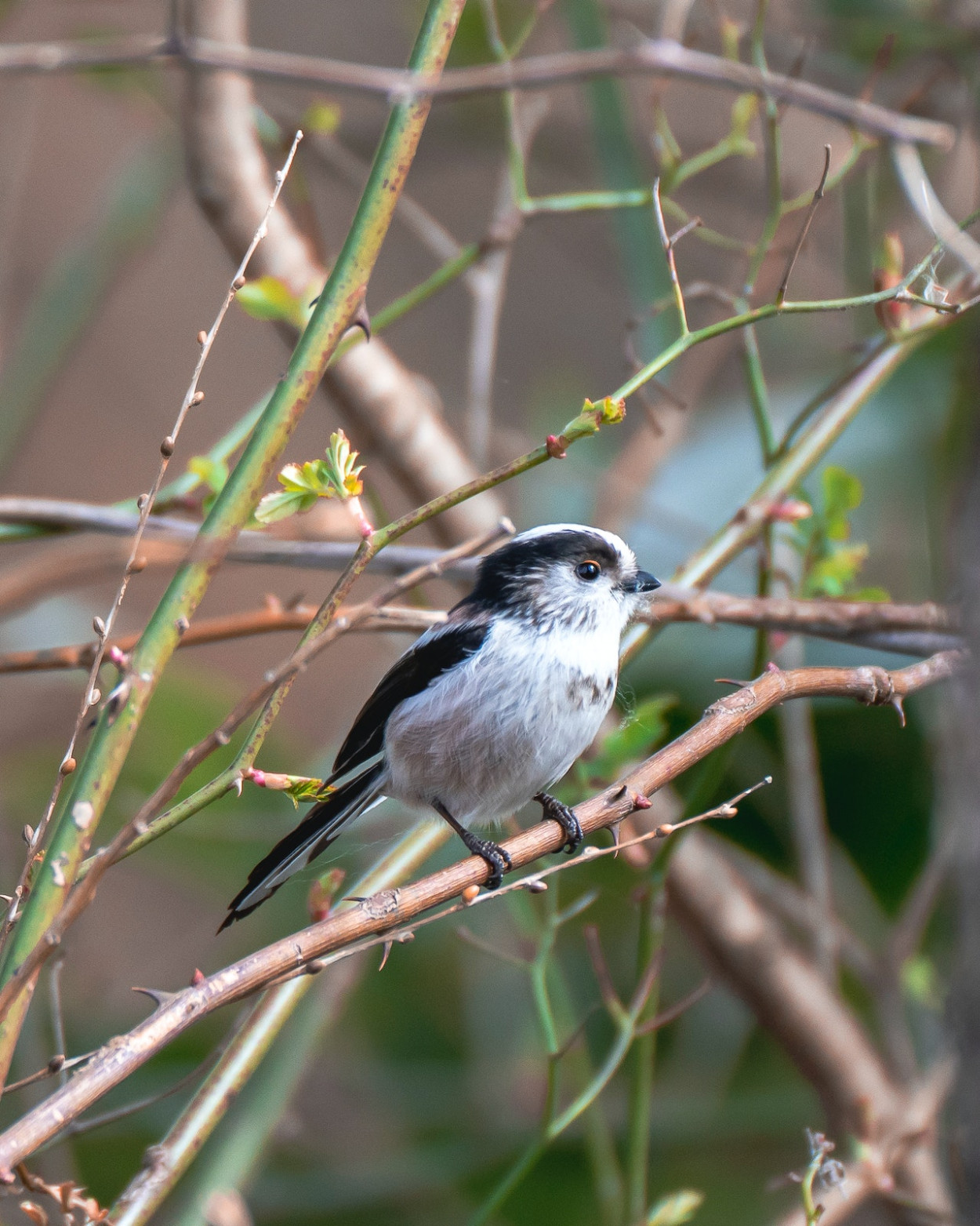
The Long-Tailed Tit, also known as the Long-Tailed Bushtit, is a common little round bird in Europe and the Palearctic region, with its genus name tracing back to Aristotle's reference to European tits.
These tiny round birds are about 13_15 cm (56 inches) long, including their long, narrow tail, and feature a round body, stubby bill, and plumage of black and white, sometimes with grey and pink. They communicate through three distinct calls, including a high-pitched "pit," a "triple trill" resembling "eez-eez-eez," and a rattling "schnurr," which intensify when crossing open terrain or when an individual separates from the group.
7. Pink Robin (Petroica rodinogaster)
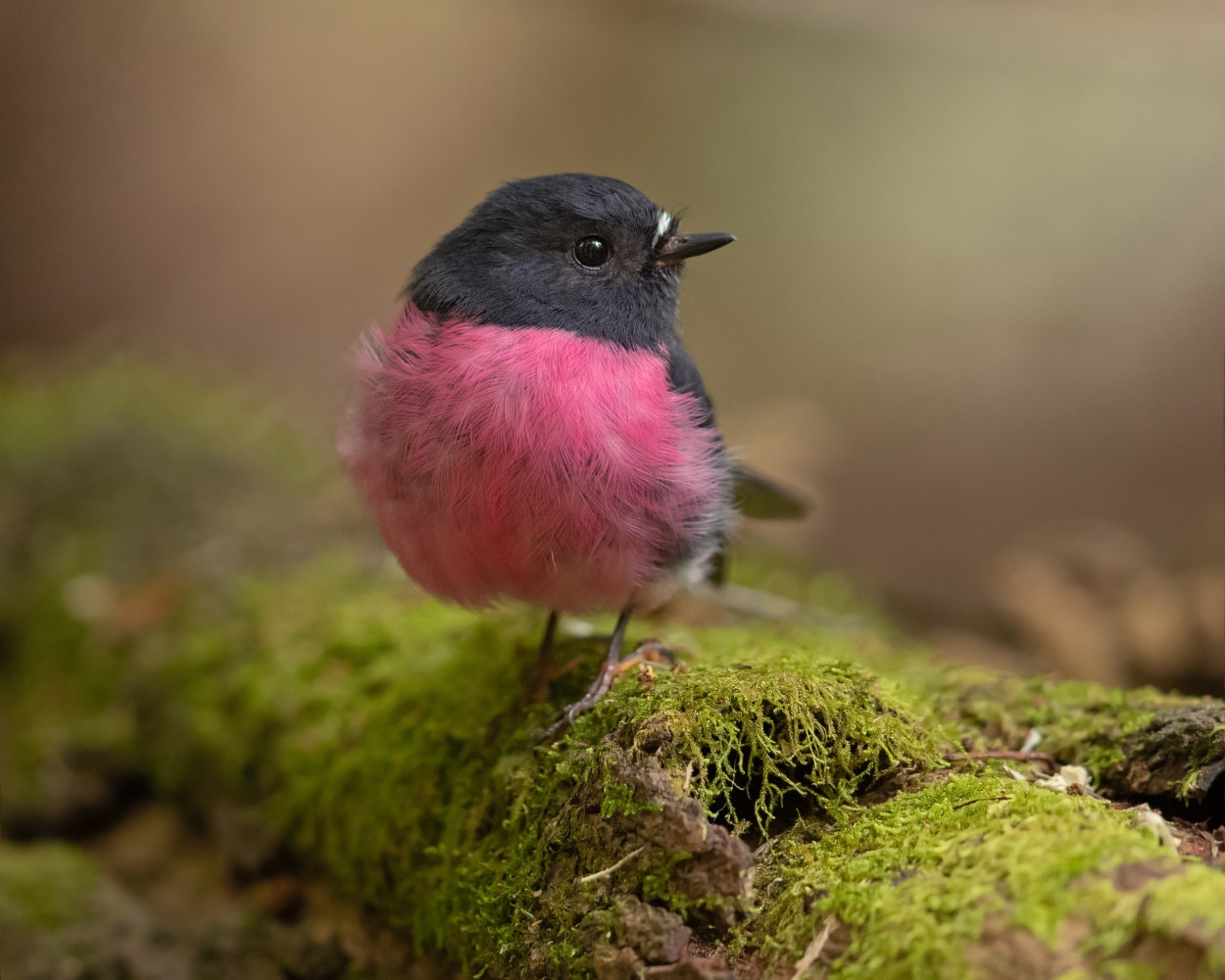
The Pink Robin, a small passerine round bird native to southeastern Australia, resides in cool temperate forests. It displays sexual dimorphism, with males having a distinctive white forehead spot and pink breast, set against grey-black upperparts, wings, and tail, while females sport grey-brown plumage with buff wing-bars and slightly pinkish underparts.
Measuring 13.5 cm (5.3 in) in length, both genders share black bills, legs, and dark brown eyes. Their exact placement on the passerine family tree is uncertain, but they are believed to be an early offshoot of the Passerida group of songbirds.
8. Horned Lark (Eremophila alpestris)
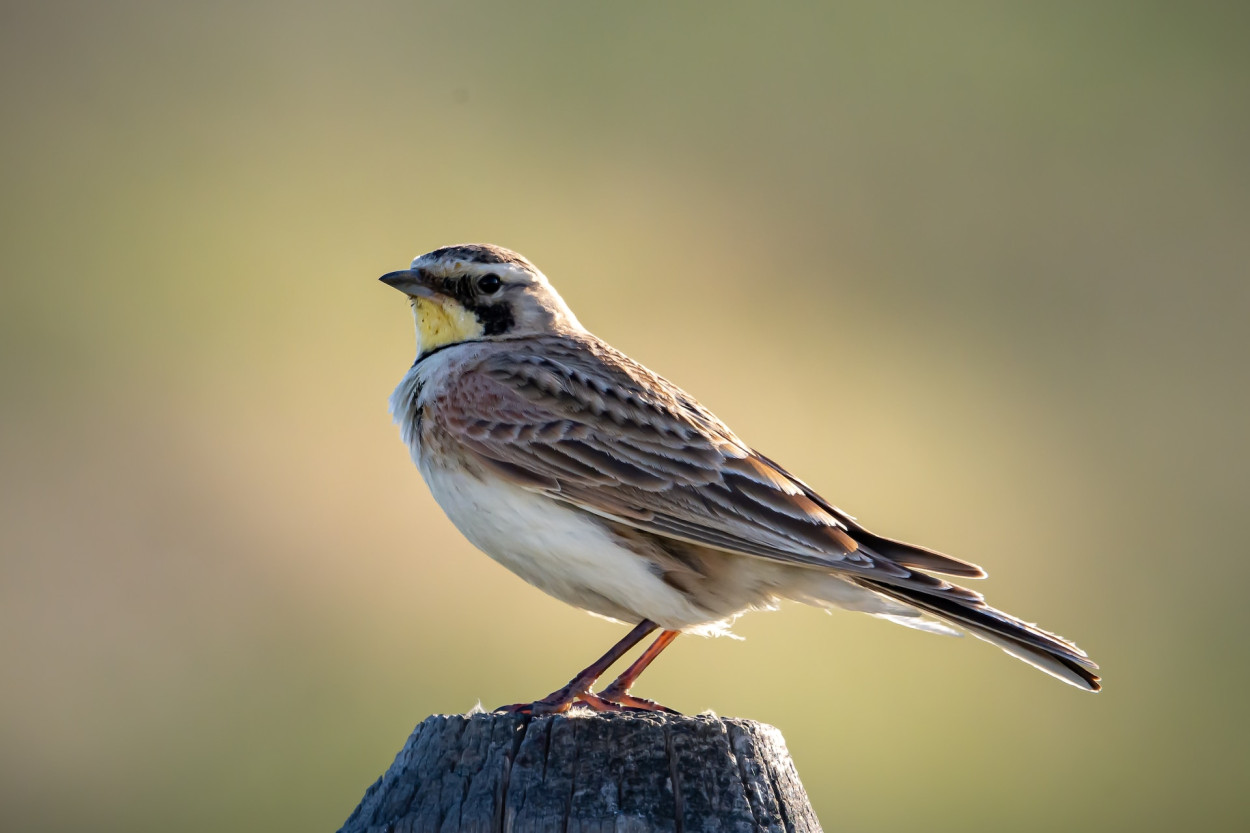
The Horned Lark, also known as the Shore Lark, is a member of the lark family found across the northern hemisphere. In North America, it's called the Horned Lark, while in Europe, it's known as the Shore Lark.
This distinct round bird features a brown-grey upper body, pale underparts, and a striking black and yellow face pattern, with a mostly black tail except for the central feathers, creating a noticeable contrast.
Summer males in North America display black "horns," while various races in North America and the southern European mountain race exhibit different face patterns and back colours, with the latter having a greyer upper body and a white face pattern instead of yellow.
9. Australian Brush Turkey (Alectura lathami)
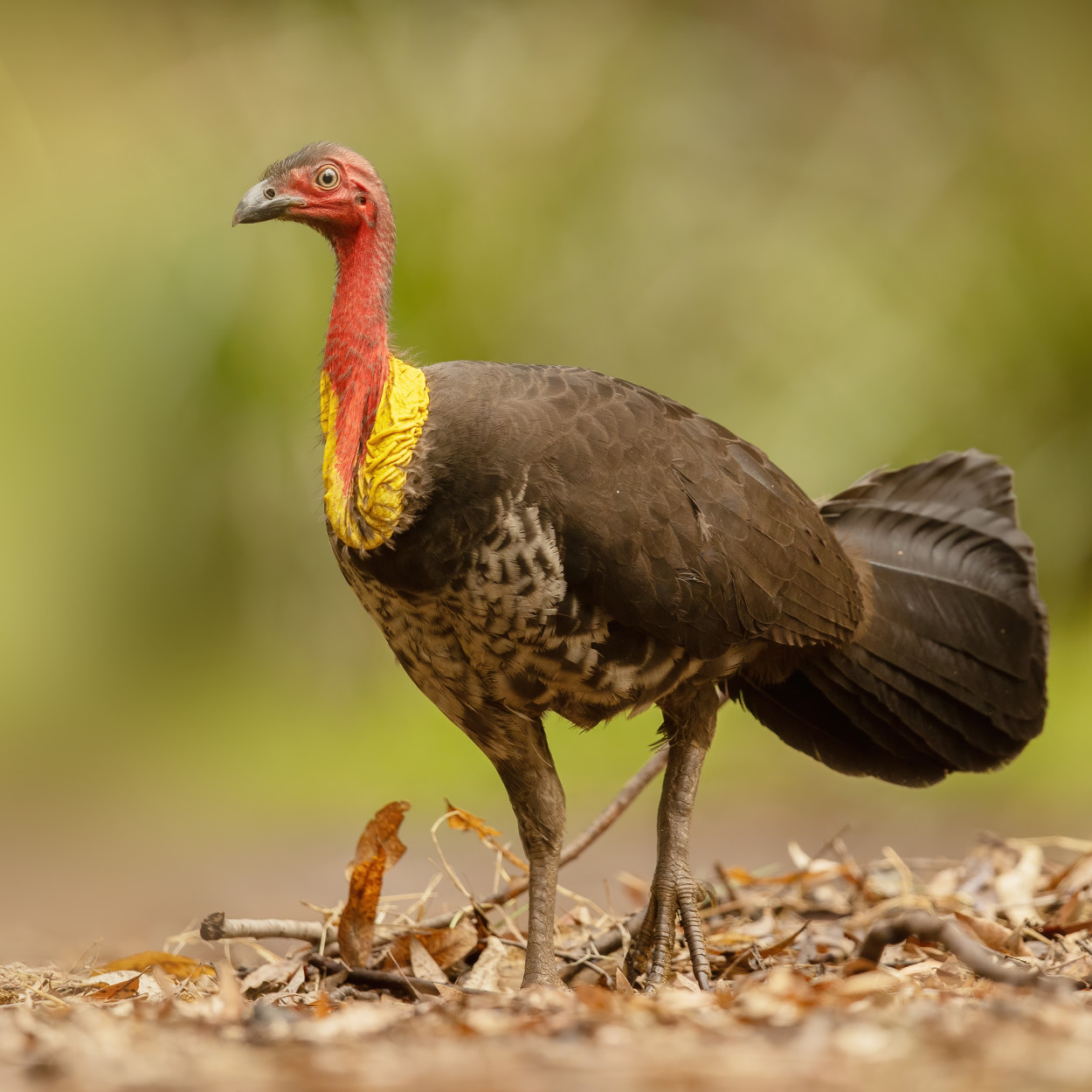
The Australian Brush Turkey, also known as the Australian Brush-Turkey or Gweela, is a widespread bird recognized for its unique appearance.
These large birds have black feathers, a red head, and measure around 60_75 cm (23.5_29.5 in) in length with an 85 cm (33 in) wingspan. There are subspecies, with the northern Cape York Peninsula variant being a smaller bird. They have a distinctive fan-like tail, mainly black plumage, and a bare redhead with a yellow (in the nominate subspecies) or purple wattle (in A. l. purpureicollis).
During breeding season, males exhibit larger and brighter wattles, often swaying as they move. The underside of their bodies has white feathers, more prominent in older birds. Despite being less agile flyers, they may take flight when threatened by predators or to roost in trees at night or escape daytime heat.
10. California Quail (Callipepla californica)
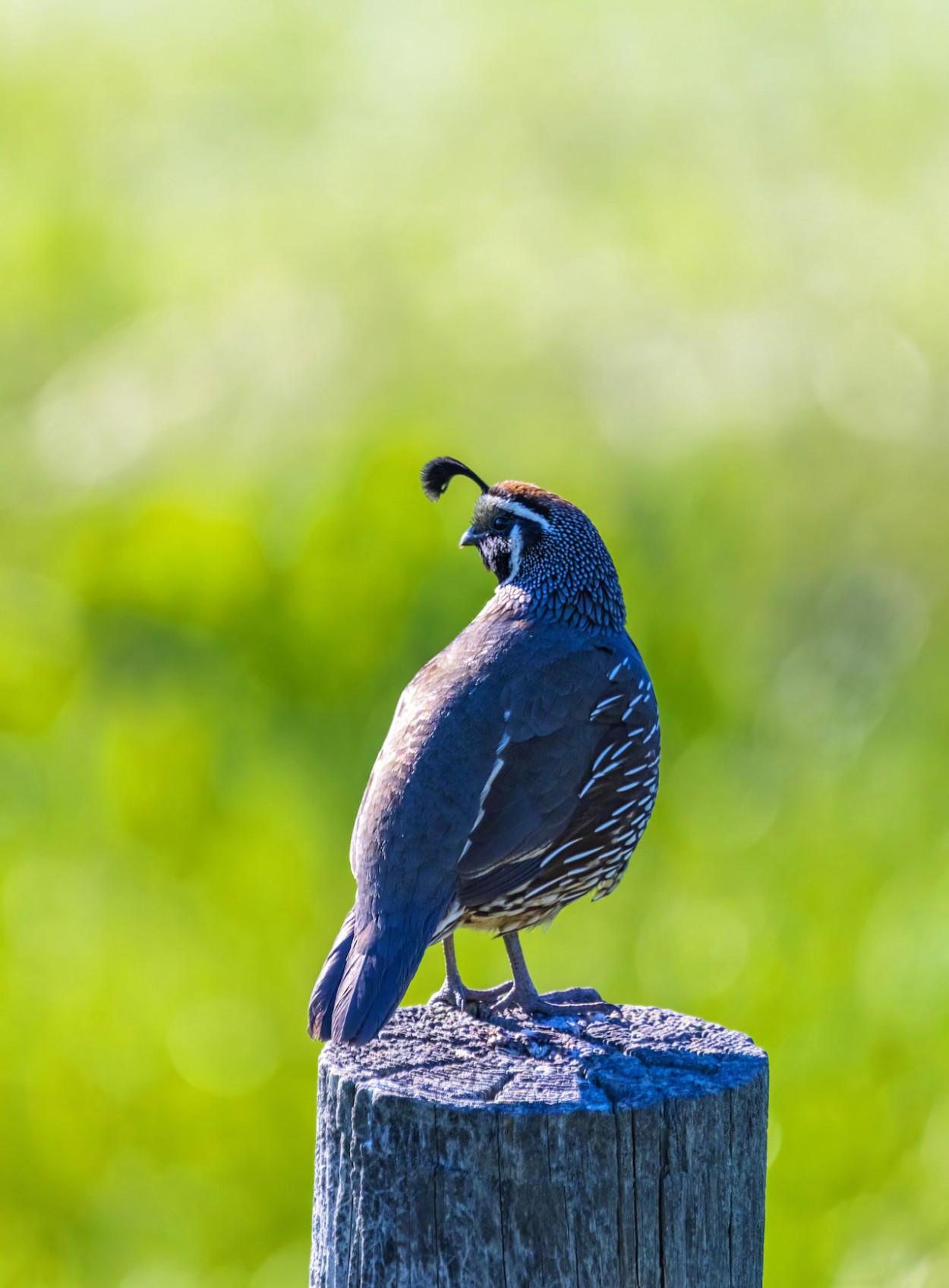
The California Quail, also known as the California Valley Quail or Valley Quail, is a small ground-dwelling round bird in the New World quail family. They are known for their distinctive curving crest or plume, which is black in males and brown in females.
Males have a dark brown cap, black face, grey-blue chest, and light brown belly, while females and young birds are mainly grey-brown with a light belly. These round birds are closely related to Gambel's Quail but differ in crest length, head coloration, and appearance. The California Quail was designated as the official state bird of California in 1931.
11. Chukar (Alectoris chukar)
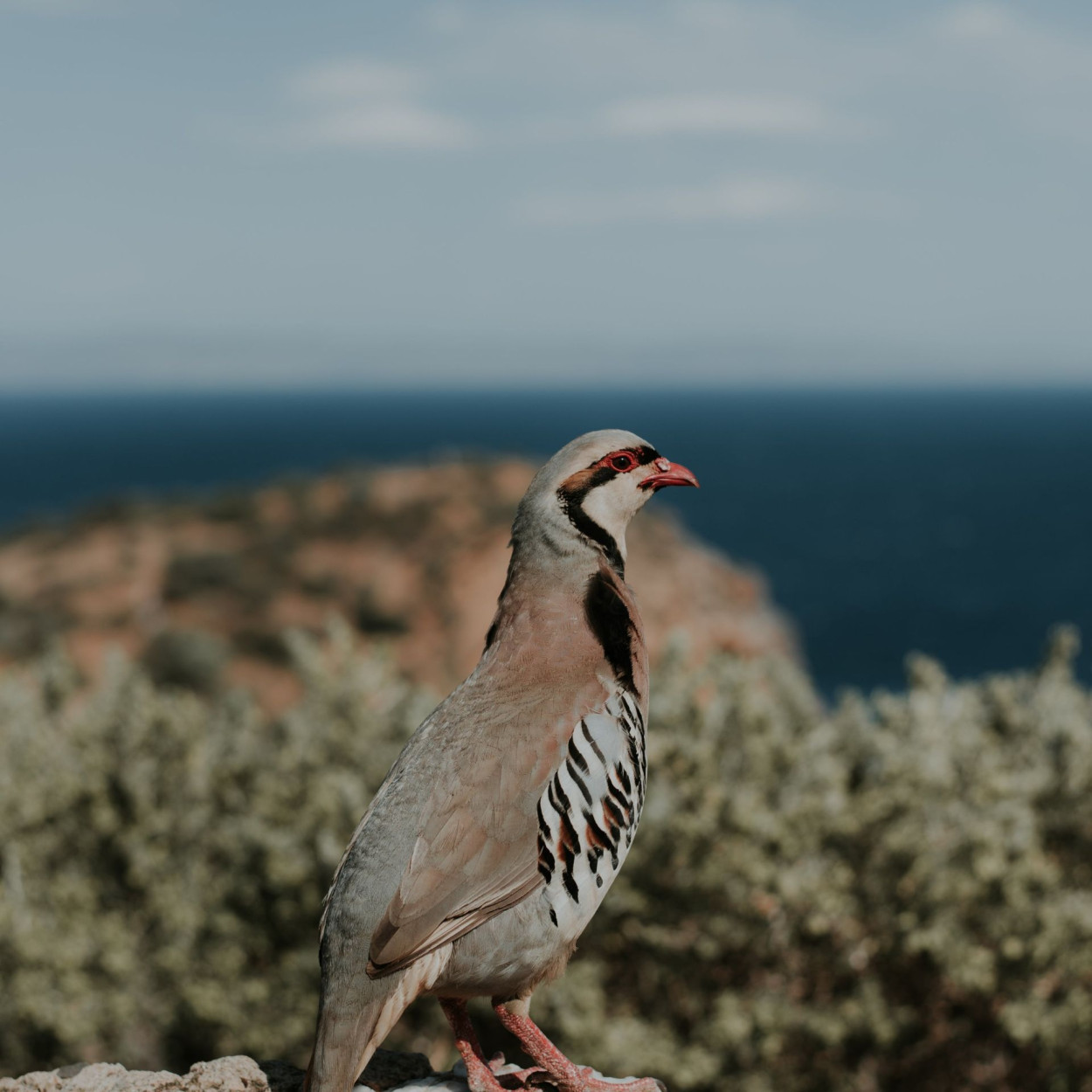
The chukar partridge, a game round bird in the pheasant family, is known for its striking black and white flanks and distinctive black band encircling a white throat. It's native to Asia but has been introduced to North America, New Zealand, and parts of the Middle East and temperate Asia.
Measuring 32_35 cm (13_14 inches) in length, it has a brown back, grey breast, and buff belly. Both males and females are similar in appearance, but females lack a spur. Its loud call, resembling "chuck-chuck-chukar-chukar," inspired its name. Often confused with the rock partridge, it can be distinguished by its browner back and yellowish foreneck. Common names for this bird include chukker, Indian chukar, and keklik.
12. Veery (Catharus fuscescens)
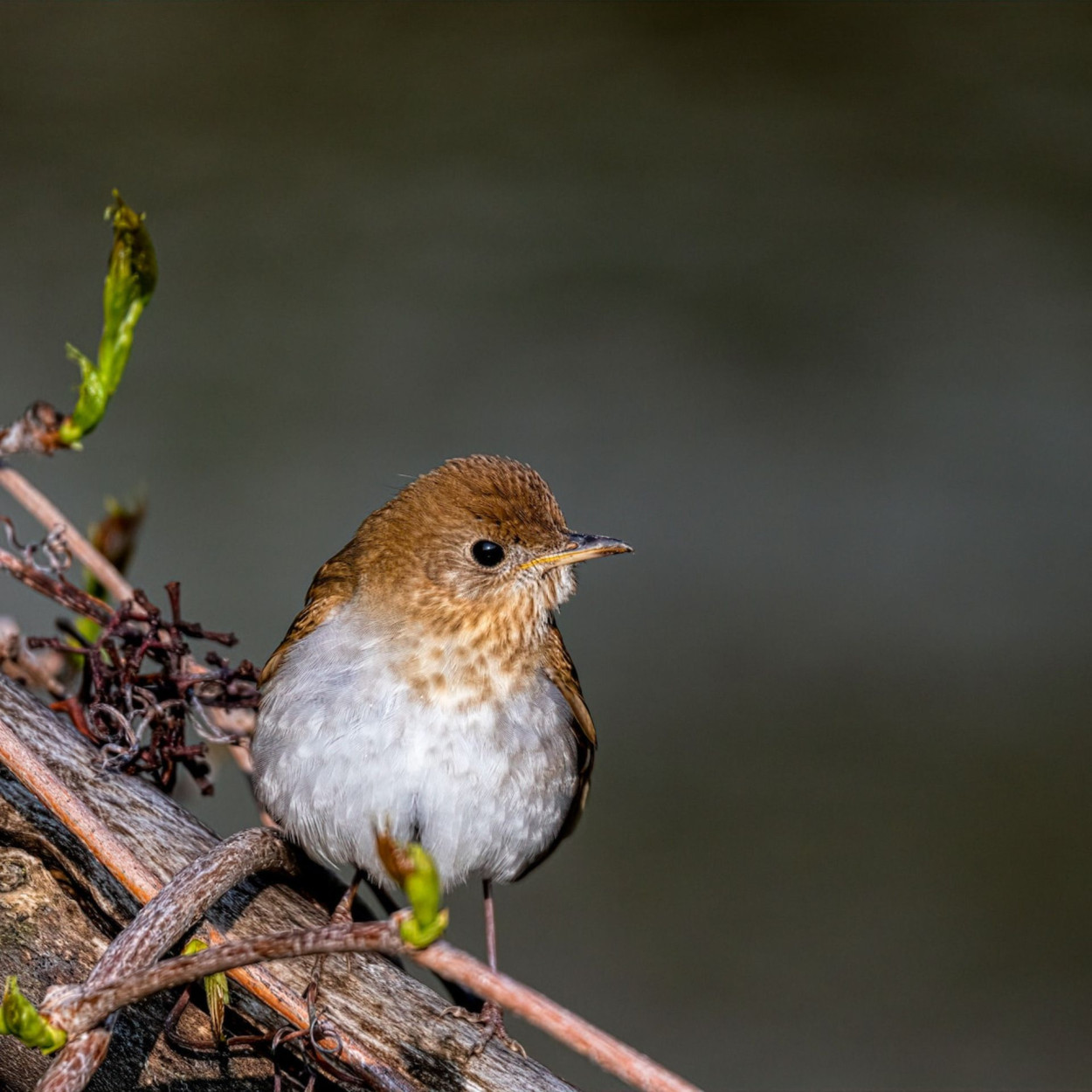
The veery is a small North American thrush, closely related to other Catharsis species like the grey-cheeked thrush, Bic-knell's thrush, Swanson's thrush, and hermit thrush. It's also known as Wilson's thrush or tawny thrush and has up to six subspecies, categorized as eastern veery, western veery, and Newfoundland veery.
Measuring 16_19.5 cm (6.3_7.7 in) in length and weighing 26_39 g (0.92_1.38 oz), with some reaching up to 54 g (1.9 oz), the veery features light brown upper-parts and white underparts with a tawny breast and faint brown spots. They have pink legs and sing a distinctive flute-like song, with their common call being a descending "vee-er."
The round bird veery exhibits altered singing behaviour when exposed to barred owl playback, likely as a predator-avoidance strategy.
13. Swamp Sparrow (Melospiza georgiana)
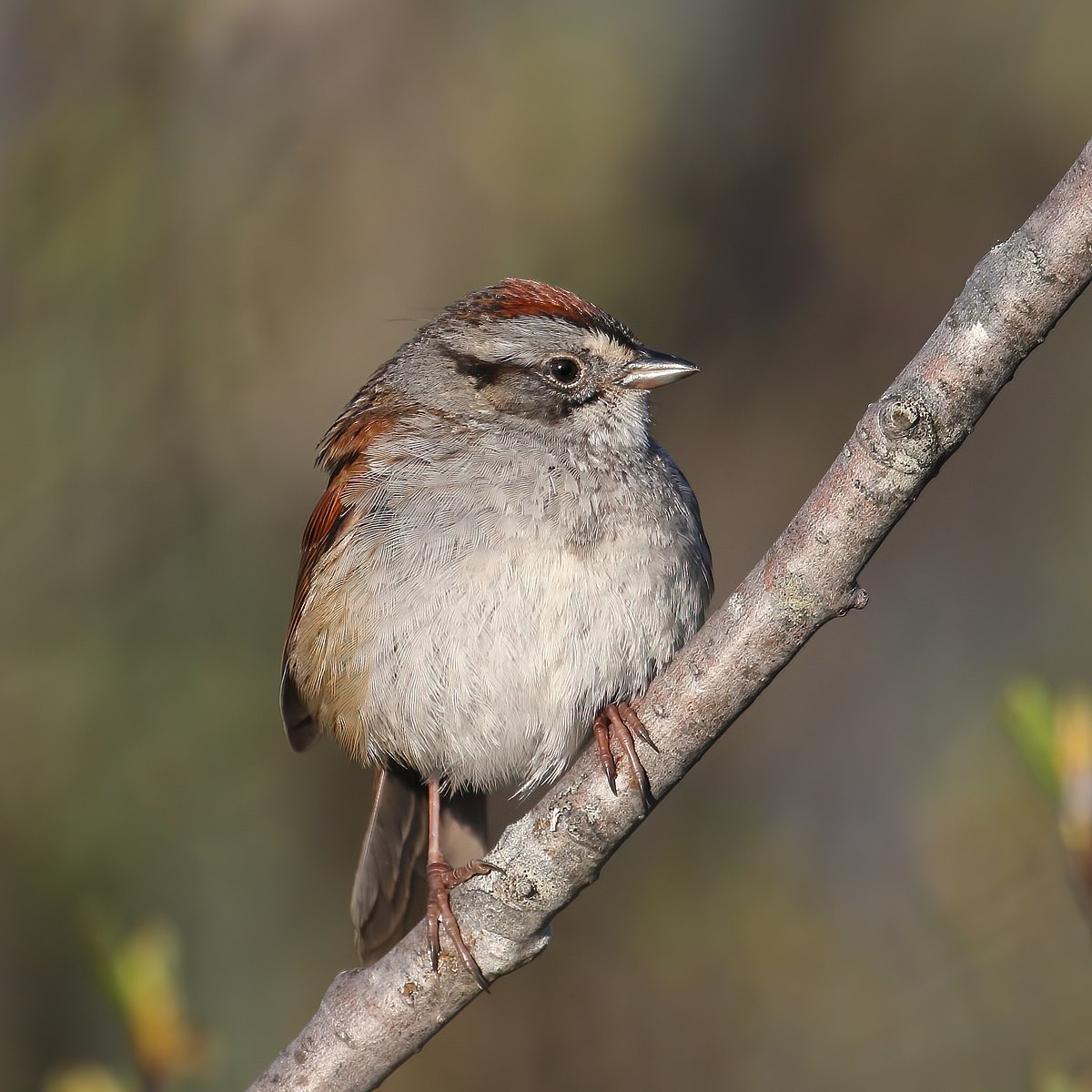
The swamp sparrow is a medium-sized New World sparrow closely related to the song sparrow. They measure 4.7-5.9 inches (12-15 cm) in length, weigh 0.5-0.8 ounces (15-23 g), and have a wingspan of 7.1-7.5 inches (18-19 cm). These sparrows have streaked upperparts in rusty, buff, and black, with a grey, unstreaked breast and a light belly.
They feature rusty wings and some males have rust-colored caps. Their face is grey with a dark line through the eye, and they have short bills and relatively long legs. Immature and winter adults typically display two brown crown stripes, with buff replacing much of the grey.
14. Barred Owl (Strix varia)
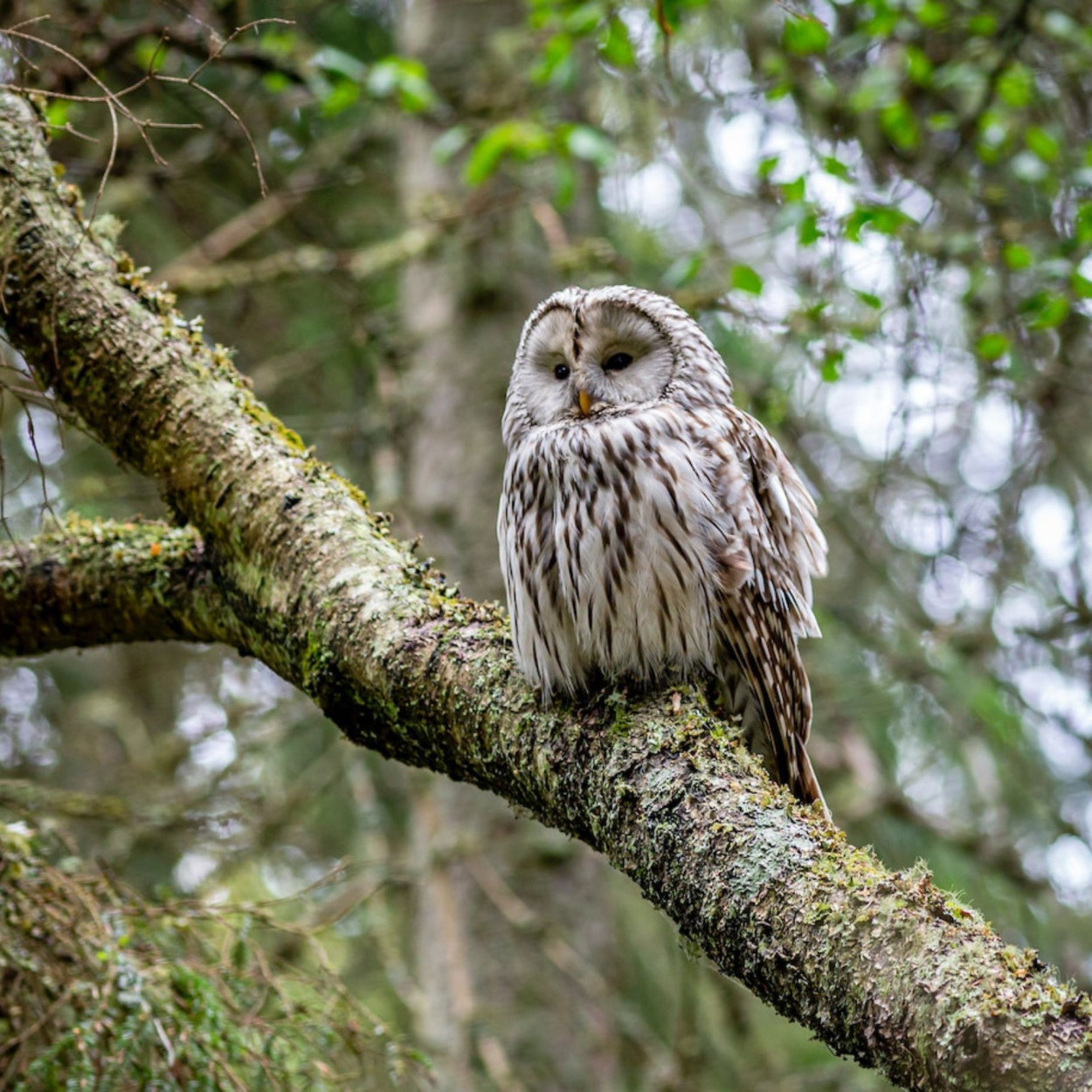
The barred owl, also known as the northern barred owl or hoot owl, is a large North American owl that mainly resides in eastern North America but has become invasive on the west coast. They favour mature forests but adapt to different woodlands and primarily hunt small mammals.
However, they are opportunistic predators, feeding on various animals like birds, reptiles, amphibians, and invertebrates. Barred owls the round bird are brown to grey with dark striping underneath and nest in tree hollows or snags.
Their westward expansion threatens the endangered spotted owl, prompting biologists to recommend culling barred owls to protect the spotted owl population.
15. Golden-crowned Kinglet (Regulus satrapa)
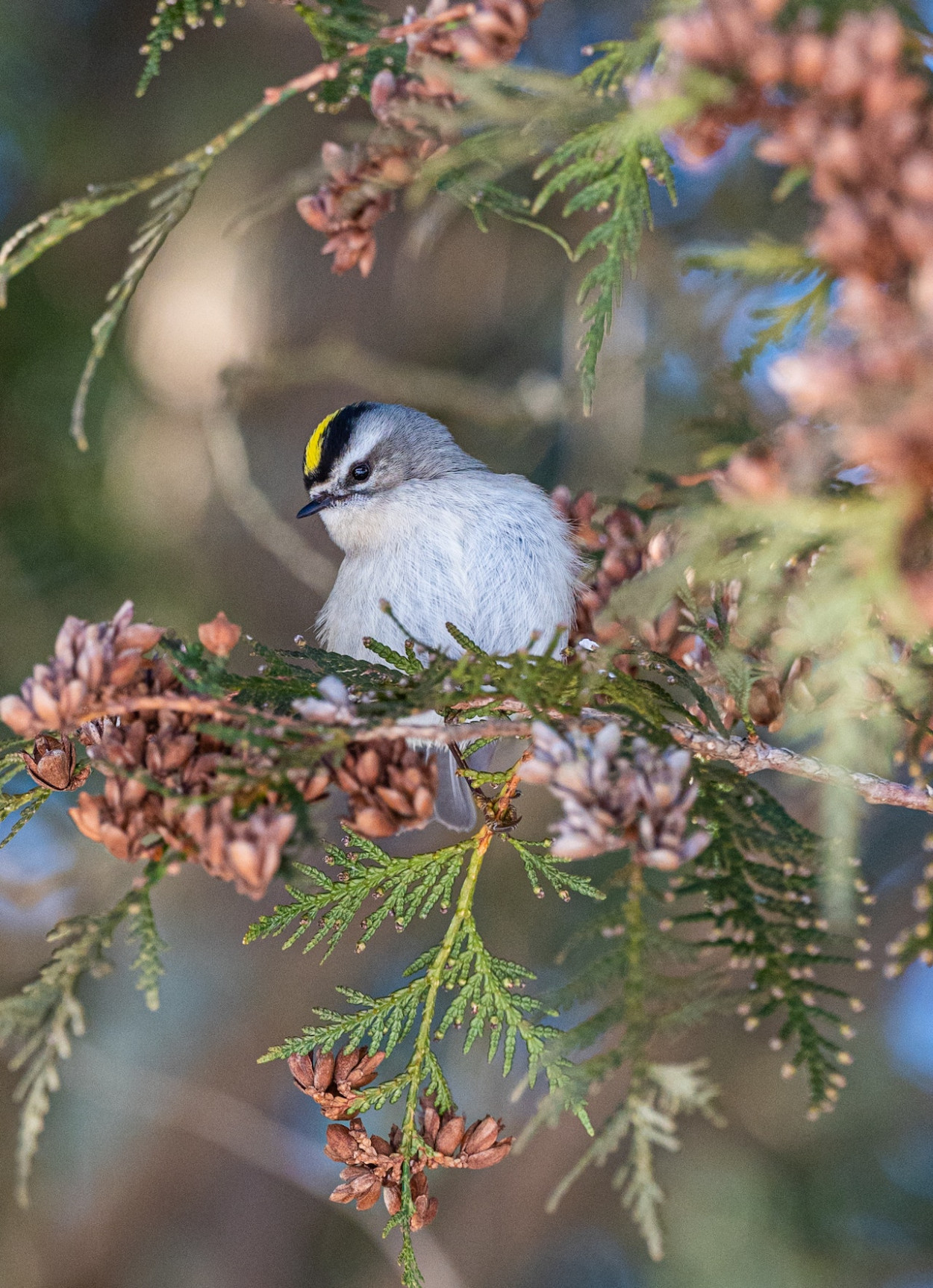
The golden-crowned kinglet is an active forager in trees and shrubs, primarily feeding on insects, insect eggs, and spiders. It produces high-pitched calls, isn't easily startled by humans, and builds concealed hanging cup nests on conifer branches.
This round bird is a widespread North American migratory species, breeding in coniferous forests across Canada, the northeastern and western United States, Mexico, and Central America.
It migrates to the United States during the non-breeding season, with some residing permanently in coastal areas and the southern parts of their range. Northern individuals remain further north in winter compared to the ruby-crowned kinglet.
16. Black-capped Chickadee (Poecile atricapillus)
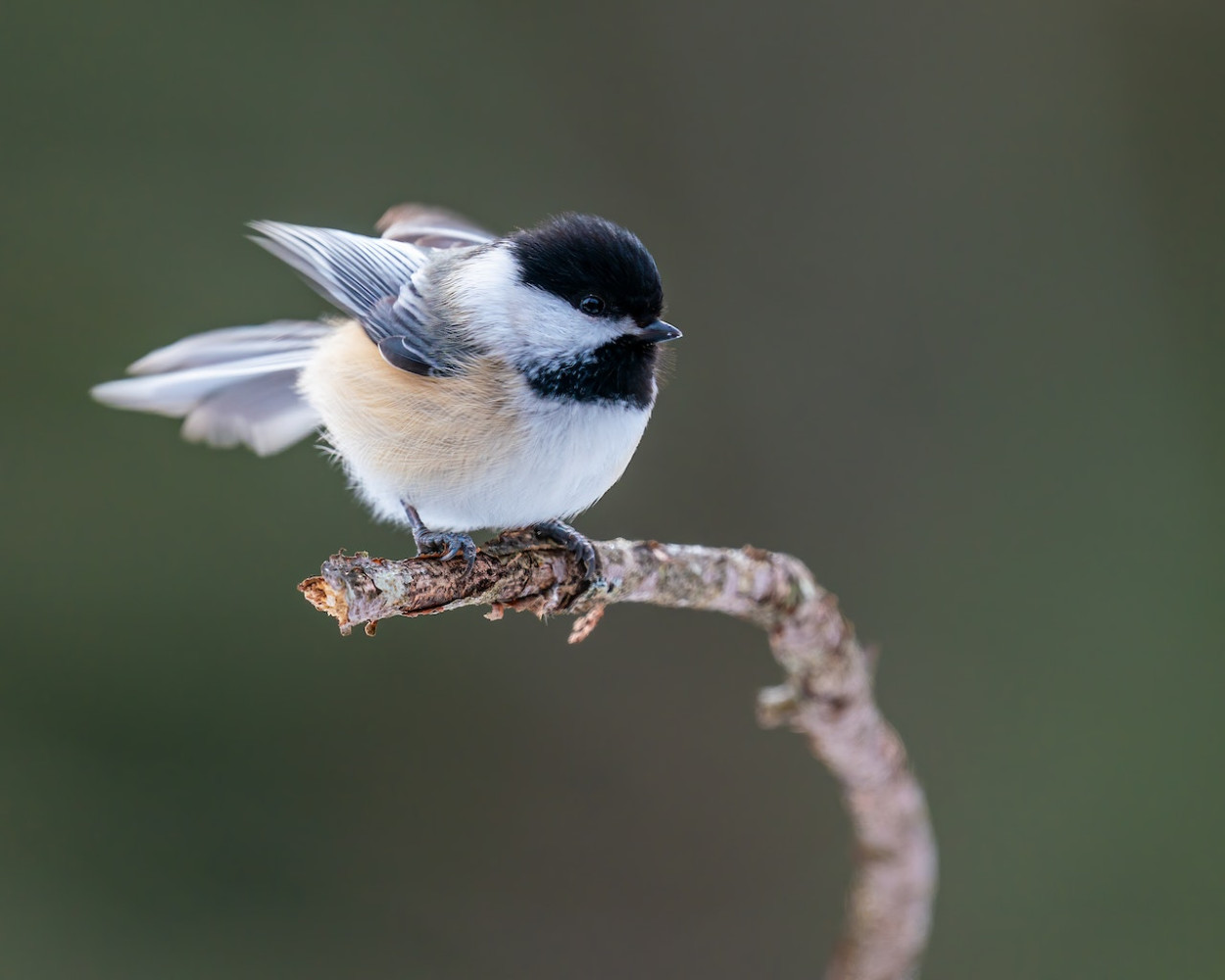
The black-capped chickadee is a small North American songbird living in deciduous and mixed forests. It's known for its ability to lower its body temperature on cold nights, its sharp spatial memory for food caches, and its boldness around humans, even feeding from hands.
This small round bird is widely distributed across North America, from northern U.S. to southern Canada, including Alaska and Yukon. It's recognized by its black cap and bib with white sides and is the state bird of Massachusetts and Maine in the U.S., as well as the provincial bird of New Brunswick in Canada.
The black-capped chickadee is social, forming winter flocks with other species, and is famous for its distinctive calls, including "fee-bee" and "chick-a-dee-dee-dee."
17. Hermit Thrush (Catharus guttatus)
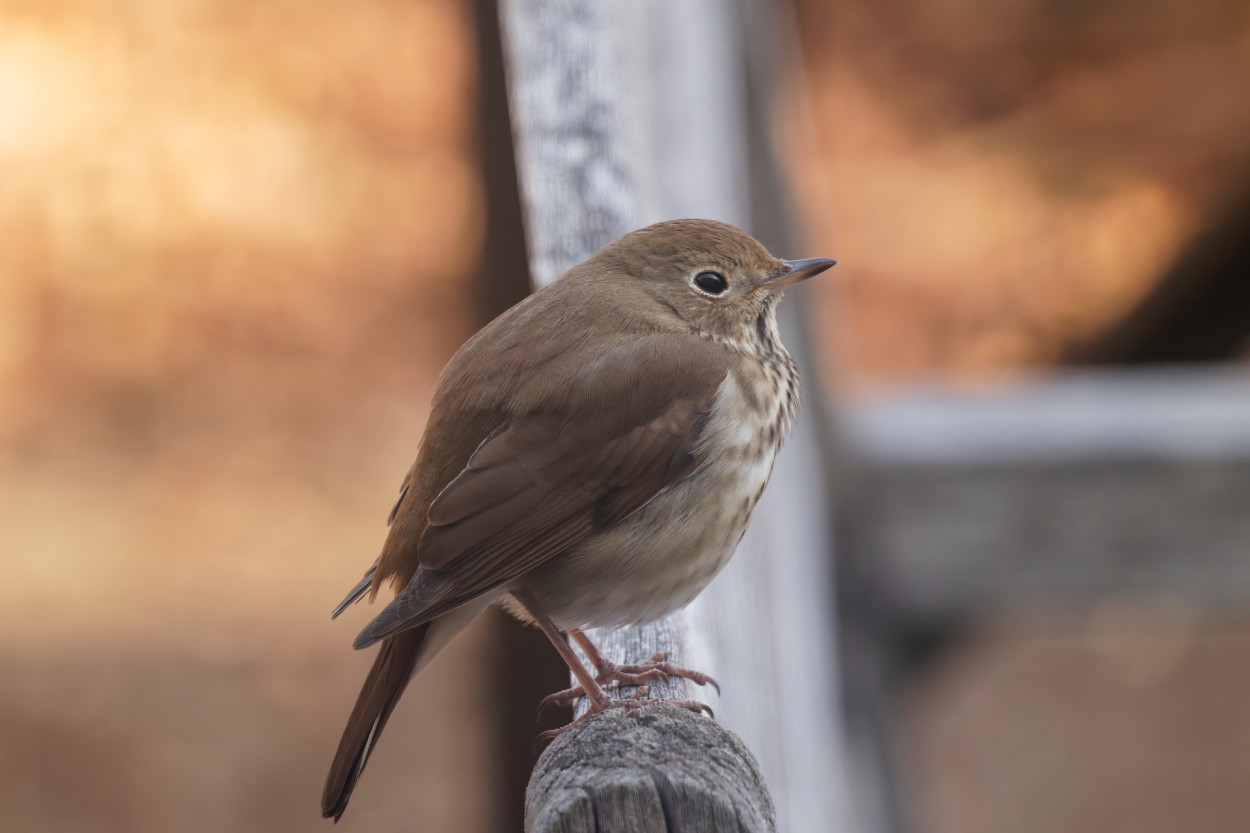
The hermit thrush is a medium-sized North American thrush. Unlike other North American Catharsis species, it's more closely related to the Mexican russet nightingale-thrush. They measure 15 to 18 cm (5.9 to 7.1 in) in length, with a wingspan of 25 to 30 cm (9.8 to 11.8 in) and a weight ranging from 18 to 37 g (0.63 to 1.31 oz). These thrushes have brown upper parts with reddish tails, white underparts with dark breast spots, grey or brownish flanks, pink legs, and a white eye ring. Eastern individuals appear more olive-brown on the upper parts, while western ones are more grey-brown.
18. Dunlins (Calidris alpina)
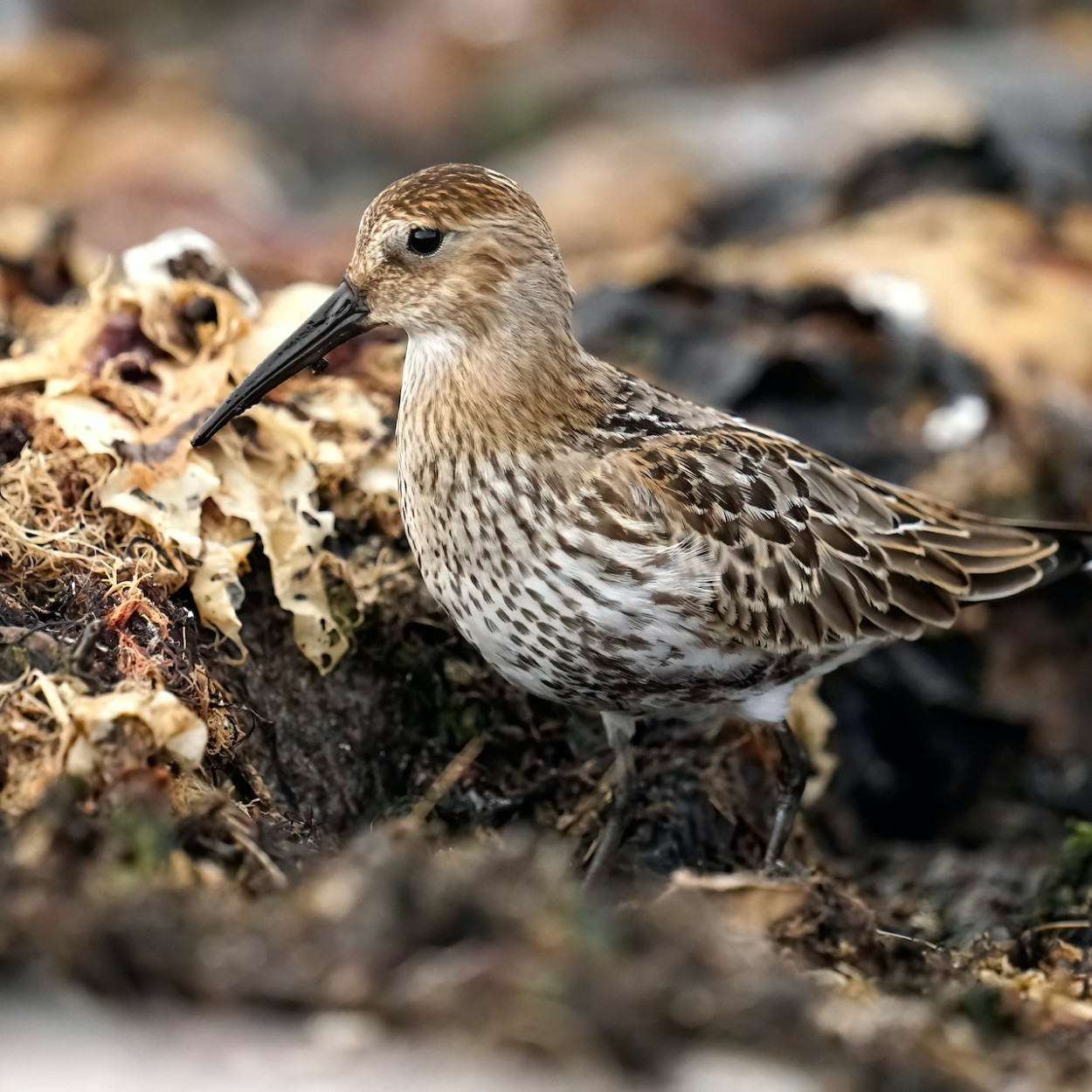
The dunlin is a small wader round bird, known for its distinctive black belly during breeding, found in Arctic and subarctic regions. They have a global breeding range, with some undertaking long migrations to winter in Africa, Southeast Asia, and the Middle East, while others migrate shorter distances along North America's coasts.
In winter, their plumage turns mainly grey above and white below, with juveniles displaying brown upper-parts and a white wing bar in flight. They use their sensitive, blood-filled bills to locate invertebrate prey in mud and sand, emitting typical sandpiper "peep" calls and a harsh trill during display songs.
19. The Round Goldcrest (Regulus ignicapilla)
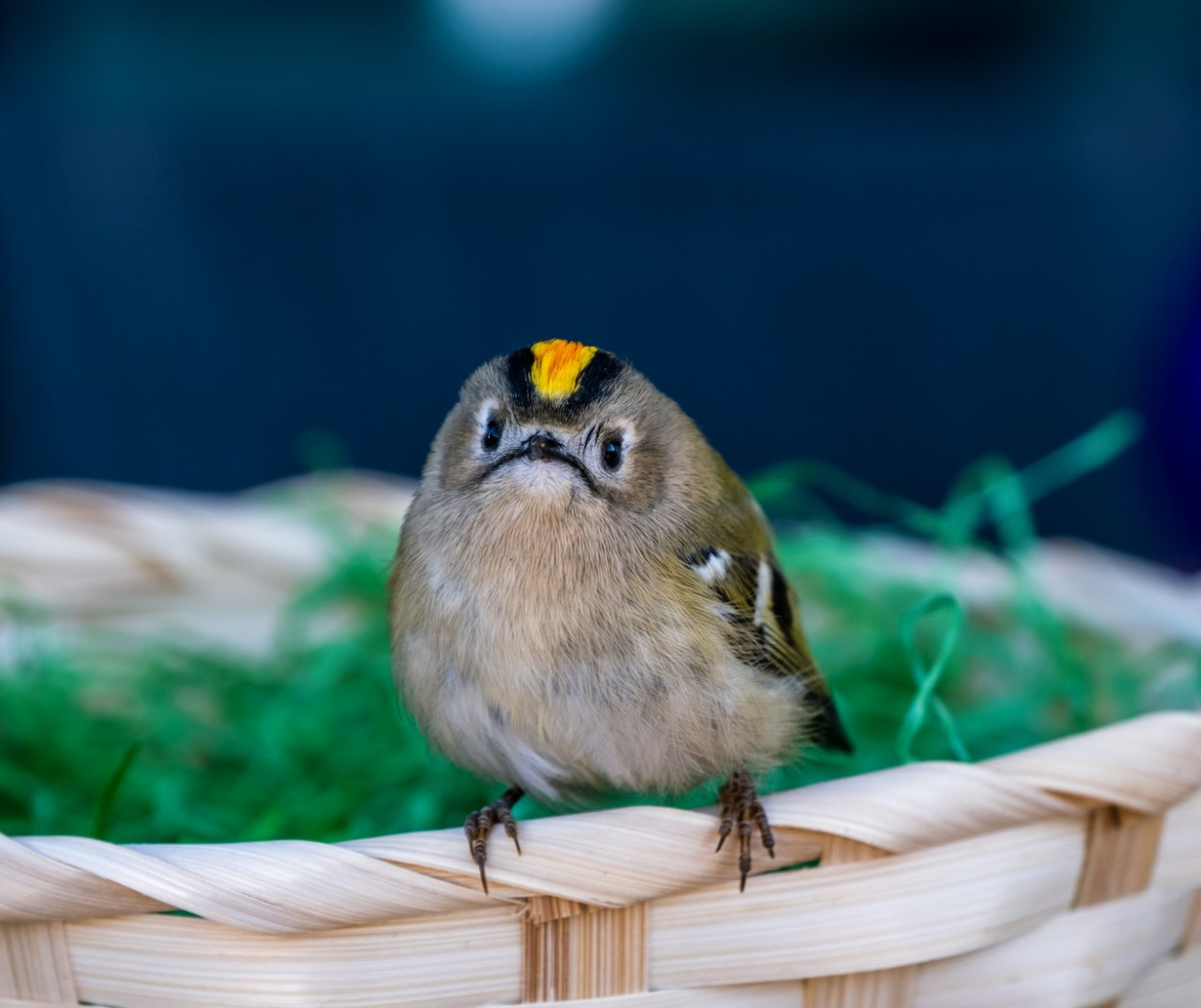
The goldcrest, a tiny bird known for its golden crest feathers, is referred to as the "king of the birds" in European folklore. It breeds across a wide range in the Palearctic and migrates south for the winter. Measuring only 8.5_9.5 cm (3.3_3.7 in), it's the smallest European round bird and features olive-green upper-parts, buff-white underparts, and a vibrant yellow or orange crest on its head.
It breeds in coniferous woodlands, builds compact nests on tree branches, and is highly active while foraging for insects, characterized by its distinctive whirring wing-beats in flight.
20. Northern Saw-whet Owl
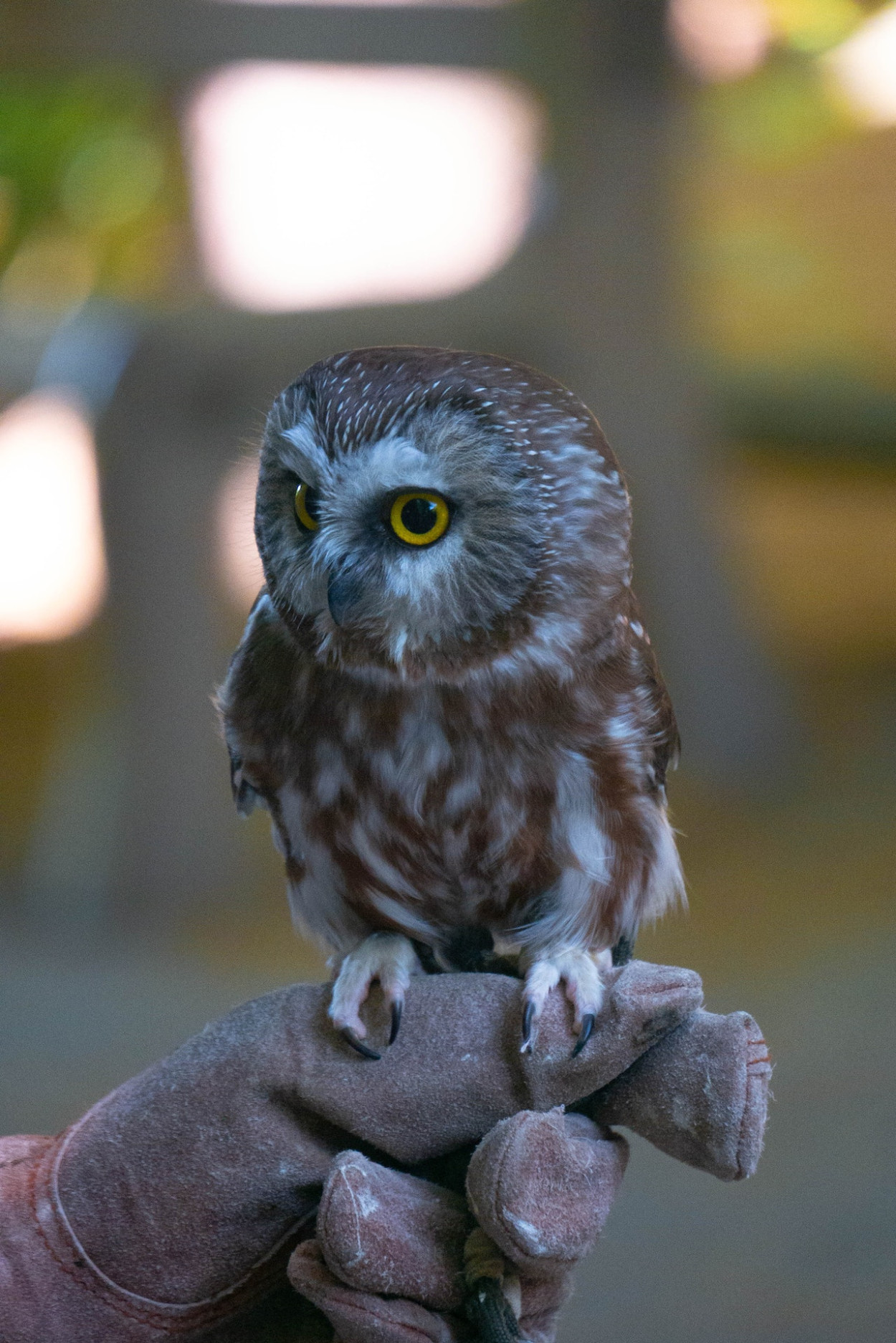
The Northern Saw-whet Owl is a compact, round-bodied owl found in North America. Characterized by its small stature and plump appearance, this owl species features a round head with striking, large, round eyes that can be enchantingly expressive.
Despite its diminutive size, the Northern Saw-whet Owl is a skilled hunter, preying on small mammals, and is known for its distinctive "whet" call, often heard in the nighttime woods.
Round Birds' Adaptations
Round birds, with their distinctive round shape, have evolved various adaptations for survival. Their rounded bodies help conserve heat, making them well-suited for cold climates where they often fluff up their feathers to stay warm.
Additionally, their feeding strategies vary, with some being seed-eaters and others specializing in insects or fish. These birds are ecologically important, contributing to seed dispersal and plant growth in diverse habitats.
However, they face modern challenges like habitat loss, climate change, and pollution, emphasizing the need for conservation efforts to protect these unique species.
Round Birds in Culture
Round birds hold cultural significance, appearing in folklore and symbolism globally, often representing renewal and joy. Roundest birds has also inspired artists and filmmakers, gracing cartoons, illustrations, and literature.
Birdwatchers find excitement in spotting these charming creatures in the wild, highlighting the importance of habitat conservation for these beloved birds.
Conclusion:
In the world of avian wonders, round birds hold a special place, charming us with their plump, endearing appearance and unique adaptations.
These delightful creatures play essential roles in their ecosystems, inspire cultural symbolism, and continue to capture our imaginations. As we marvel at their roundness, let us also remember the importance of conservation to ensure these birds thrive in the wild.
FAQs about Round Birds
1. What is the roundest bird in the world?
The concept of the "roundest bird" is subjective, and there isn't a definitive answer.
2. Why are some birds round in shape?
Roundness in birds can serve multiple purposes, including thermoregulation, camouflage, and predator avoidance. It's an adaptation that helps them thrive in their respective environments.
3. Are round birds found in specific regions?
Round birds can be found in various ecosystems around the world, from tropical rain-forests to arid deserts. They have adapted to diverse habitats.
4. How do round birds differ from other bird species?
Round birds typically have plump, round bodies and thick, feathery plumage, which sets them apart from the more streamlined and sleek avian species.
5. What conservation efforts are in place to protect round birds?
Conservation efforts for round birds focus on preserving their habitats, addressing habitat loss, and combating the effects of climate change. These initiatives are essential to safeguard these unique and fascinating avian species.
6. Where can I spot round birds in the wild?
You can find round birds in various habitats, including gardens, coastal cliffs, and woodlands, depending on the species and region.
7. Do round birds make good pets?
Round birds are wild animals and should not be kept as pets. It is essential to admire and appreciate them in their natural habitats.
